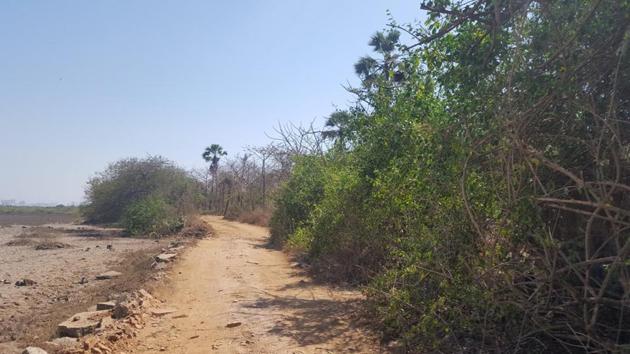Another tenacious reprieve from development for Gorai-Manori
When recent news reports said that the Mumbai Metropolitan Region Area Development Authority (MMRDA) – the planning agency for the urban agglomeration spread over 4,300 square kms – will no longer be the special planning authority for the area, residents are hoping that unbridled urbanisation will be kept at bay, at least for now.
The Manori-Gorai-Uttan area in the northwest of Mumbai, one of the last stretches of open land in the city, occasionally erupts in protests when the government’s planning agencies thrust a project on the area.

When a Special Economic Zone (SEZ) centering on tourism was proposed in the area a decade ago, residents of the dozen-odd villages protested and the project was put on a back burner. Reports of a new bridge that would link Marve, in the western suburbs, with Manori led to protests by East Indians – descendants of fishing, farming, salt-making castes that converted to Roman Catholicism in the fifteenth and sixteenths centuries - in January 2016. The local residents fear that these projects will urbanise the area and destroy their centuries-old culture and way of life.
So, when recent news reports said that the Mumbai Metropolitan Region Area Development Authority (MMRDA) – the planning agency for the urban agglomeration spread over 4,300 square kms – will no longer be the special planning authority for the area, residents are hoping that unbridled urbanisation will be kept at bay, at least for now.
MMRDA was made the planning agency for the beach-fringed area when it was declared as a tourism development zone. This meant that villagers had several agencies, including the MMRDA, the Brihanmumbai Municipal Corporation and the Mira-Bhayander Municipal Corporation – which controls the northern villages - to deal with when they sought permission for selling land or repairing buildings. Dharavi Beth is the name local residents use to describe the Manori-Gorai-Uttan region.
“When MMRDA was there, we did not know when some project was being planned for the area,” said a member of the East Indian community. “With the municipal corporations solely responsible for development permissions, it will be easier for us.”
“It is a partial victory,” said Godfrey Pimenta, a lawyer and a member of the East Indian community. “The SEZ has been scrapped, the plans for the bridge seem to be on hold, but we are now worried that the coastal road (which, when connected to the Bandra-Worli Sea Link, will run along the city’s west coast) will pass through these villages. The idea is to open it for future development.”
Property developers have been eyeing this area, which is one of the last open spaces in the city, apart from Aarey Milk Colony and the salt pans. What has kept Mumbai’s suburbia from encroaching the area is the absence of roads that could link it to the suburbs - the only road to the villages starts from Bhayander.
Despite the villages’ resistance to development, the area has seen a lot of changes. Amusement parks, a government training academy and other developments have come to the area. “The area has vast stretches of mangrove forests and the place is one of the places selected nationally for mangrove conservation,” said Pimenta. “But there is a constant threat of development that hangs over the region.”
Gleason Baretto of the Mobai Gaothan Panchayat, an organisation representing East Indians, agreed that even without planning agencies dictating what should be done, it would be difficult to preserve the area’s uniqueness. “It is a challenge to preserve the architecture. We have seen how it is being wiped out in places like Pali (a former East Indian village). We can maintain the heritage by giving incentives like TDR (where owners of heritage-listed properties can get permissions to construct more space in another plot as compensation). There are plans to promote the idea of homestays in the area.
Other plans include conservation of the area’s unique architecture which is a blend of Portuguese and Konkan building styles. “We have planned a Goathan (village) restoration project. Earlier, it was called a ‘beautification project’ but now the stress is on restoration,” said Baretto. “We are not against outsiders coming in. What we want is a respect for local culture.”
Stay updated with all the Breaking News and Latest News from Mumbai. Click here for comprehensive coverage of top Cities including Bengaluru, Delhi, Hyderabad, and more across India along with Stay informed on the latest happenings in World News.
Stay updated with all the Breaking News and Latest News from Mumbai. Click here for comprehensive coverage of top Cities including Bengaluru, Delhi, Hyderabad, and more across India along with Stay informed on the latest happenings in World News.





